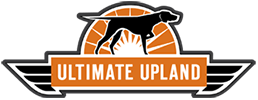Which gauge?
Besides just being an issue of comfort, the “what gauge?” question can’t truly be answered without addressing shooting skill level.
Even the largest upland gamebird has a brain roughly the size of a pea. It hypothetically only takes one pellet straight to that bean in order to dispatch the bird. So, regardless whether you wield the pea shooting .410 or a 12 gauge bazooka, if you can connect lead to head the bird is dead.
There is no doubt that you can pack the most pellets in a 12 gauge shell. But, Annie Oakley didn’t need more projectiles — and neither do some hunters. The tradeoff for quantity of shot is normally the weight of the gun and recoil. A pound or two may not seem like much until you try hefting it around for 8 to 10 miles.
So, it’s a balancing act. And once again, it comes down to what you are comfortable shooting and carrying. There are hunters who can consistently down roosters with a .410 and feel that anything else is overkill — and for them that may be true. But, the 12 gauge is the most commonly fielded gun, period. In any given outdoor store you’ll find the widest spectrum of 12 gauge shells, and it’s likely that 2 out of every 3 hunters you come across in the upland field will be lugging 12s.
Effective and efficient dispatching of the bird is the most important issue, followed by whether or not you’re able to lift your arms at the end of the day’s hunt and then whether the bruising on your shoulder will allow you to hunt the following day.
Carry what you can shoot.

12 Gauge Shotguns
Pros:
• Pattern density, lots of shot in shells
• Many shell options, easy to find
• Often chambered for 3″- 3.5″ shells
• Most popular gun in the upland field, so you’ll be able to “borrow” shells from your hunting buddies
Cons:
• Normally a couple pounds heavier than same model 20 gauge
• Recoil
Almost everyone you come across bird hunting uses a 12 gauge today. The bulk of guns on the rack at stores are going to be 12s. The bulk of shells on shelves will be 12 gauge and they will come in every flavor.
Carry a 12 gauge and you will get the biggest bang for your buck and that’s enough for most hunters.
16 Gauge Shotguns
Pros:
• You’ll be an original because nobody hunts with them anymore
Cons:
• Nearly impossible to find shells
• Manufacturers aren’t making 16s anymore (except Browning has just begun making the new Sweet 16)
It’s been called “The Disappearing 16” for a reason – it is headed the way of the dinosaur thanks to the popularity of the 20 gauge.
There’s very little a 16 can do that today’s 20 cannot accomplish.
If you can still find the shells they will likely be more expensive than gold or in a very dusty box rammed to the back of very dusty shelf.
20 Gauge Shotguns
Pros:
• Lighter than most 12 gauge
• Lower recoil
• Easy to find shells in lots of variety
Cons:
• Less shot than 12 gauge shells
• Most manufacturers release new 20 designs after their 12s, so the “latest and greatest” will always lag
The 20 gauge is the best of both worlds: enough shot to bring down the larger upland species, but still lightweight enough to carry all day long.
Less recoil, less noise, shells that tend to be a little cheaper — it’s just tough to go wrong with this gun.
28 Gauge Shotguns
Pros:
• Lightweight, easy to carry
• Low recoil
Cons:
• Lighter loads
• Expensive shells compared to other guages
• Shell variety and selection can be minimal
Maybe the perfect gun for the southern quail hunt, the 28 gauge just feels right when hunting smaller upland species.
Not many bird hunters consistenly carry this gun likely due to the relatively expensive shells, opting instead for the 20 gauge which will have better shell selections and price.
410 Bore Shotguns
Pros:
• Lightweight, easy to carry
• Low recoil
Cons:
• Light loads can lack pattern density
• Less shell selections on store shelves
The 410 is the first shotgun for many young hunters. Because of the light recoil and report it is a great tool for teaching. Many bird hunters never lose their affinity for the weapon rooted in fond memories of their first hunts.
A great gun for quail, woodcock and smaller birds — it can also be effective on the larger upland species as long as you have a tight working dog and manage your range effectively.





